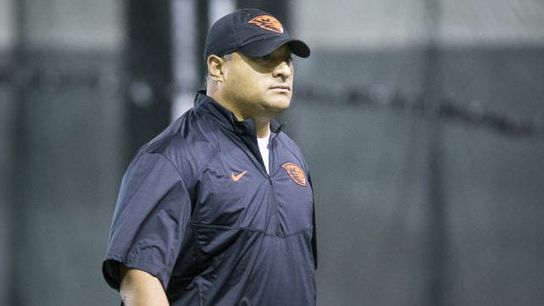New Oregon State defensive coordinator Kalani Sitake has had a relatively unusual coaching path to his current post under Gary Andersen. But it's a path that should be noted, especially for those just starting off in the profession.
Prior to joining the defensive staff at Utah, where Gary Andersen was serving as defensive coordinator, Sitake's experience was almost entirely on the offensive side of the ball, now he find himself leading a Pac-12 defensive unit. During his playing days he was a fullback at BYU under the guidance of LaVell Edwards and Norm Chow, then he made a brief switch to the defensive side of the ball at Eastern Arizona CC before becoming a defensive grad assistant at BYU.
From there, it was back to his offensive roots coaching the running backs and tight ends at Southern Utah in 2003, followed by a move to the offensive line in 2004. His big break to the FBS level brought him to the defensive side of the ball coaching the linebackers at Utah from 2005-2008. In 2009, he was promoted to defensive coordinator when Gary Andersen left for the head coaching job at Utah State. Now the two are reunited with Sitake serving as Andersen's defensive coordinator in Corvallis.
Asked to explain his coaching journey during a recent one on one interview, Sitake explained "to me, if you can coach ball, you can coach any position."
"It's just a matter of knowing the technique that we're teaching. The fundamentals of the game is pretty much the same whether you're a running back, or an offensive lineman, or a linebacker, you want to be able to - the rules are the same, you just have to know what the other guy is trying to do." he added.
"It was really helpful for me to work on the offensive side, to understand the terminology, identifying what they're trying to establish, run game and pass game and what they're looking at."
"I'm a lucky guy," Sitake goes on to explain. "All I did was listen to the men around me, and tried to absorb the most knowledge that I could, and tried to do it with humility, and trusted what we were doing as a group, and it's worked out so far so I think I'm going to continue to do it."
The message here is to find good coaches to work under, don't paint yourself into a corner on one side of the ball, and good coaches are flexible enough to have the ability to coach both sides of the ball if, and when, they are called on to do so. More from Sitake below.
